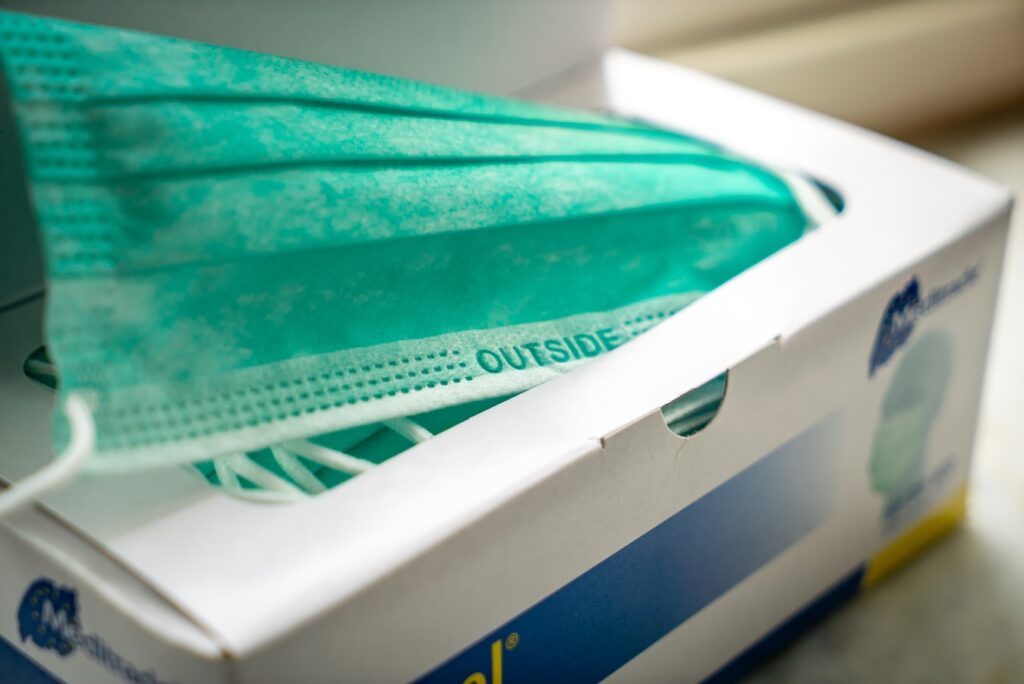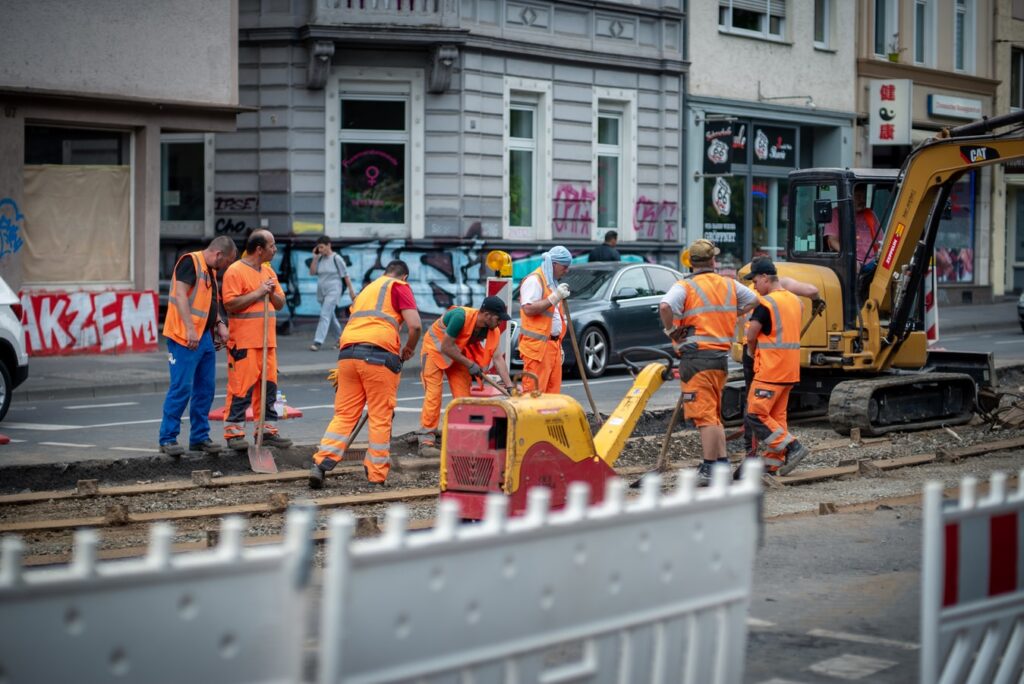Paving a path through the Covid-19 recession
Since the beginning of the new century, each major downturn in the U.S. economy has been caused by unique and mostly unexpected circumstances. The current recession, which began in February of 2020, was triggered by business restrictions and widespread public quarantines to slow the spread of the Covid-19 virus, according to the Bureau of Economic Research. Governments around the world and state leaders in the U.S. have differed greatly in their responses to the public health threat, managing the impacts of the Covid-19 virus and responding to the on-going threat. There are differences and similarities to recent previous downturns but a substantial aid package from the federal government has been crucial each time.

2020 recession
“We’ve had a much more widespread and abrupt shut down of the economy than the last recession that began in 2008 with the global financial crisis,” says Ken Simonson, Chief Economist for the Associated General Contractors (AGC) of America since 2001. “The impact has been felt by large segments of the construction industry and the country all at once. Looking back at the last recession, private home building peaked in 2006 and didn’t recover until 2011 but private, non-residential kept going at a good clip until the global crisis hit at the start of 2008.”
When business began closing in the spring to help slow the spread of Covid-19, construction activity in most states was designated as essential and was allowed to continue, with workers following guidelines recommended by public health officials. Residential building continues to be strong in most markets and many projects, especially public infrastructure work has continued.
According to a report this summer from the American Road and Transportation Builders Association (ARTBA), and similar information from the AGC of America, infrastructure projects totaling more than $9.6 billion have been delayed or canceled in the midst of the COVID-19 pandemic.
Sixteen states announced project delays or cancellations worth approximately $5 billion, while another 20 local governments and authorities have scratched or put off projects worth another $4.54 billion according to ARTBA.
The slowdown in vehicle traffic has of course, impacted highway revenues from gas and vehicle registration taxes. At least 44 states, transportation authorities and local governments have projected declining revenues putting increased pressure on transportation-related revenue sources, as well as state and local budgets.

A look at several states illustrated a number of issues facing highway and transportation planners.
While work slowed but continued in most states, there were outliers like Pennsylvania. The Pennsylvania Department of Transportation (PDOT) implemented stop-work orders on all federally aided projects and canceled two scheduled bid lettings. According to information collected by the American Association of Highway Transportation Officials (AASHTO), while some work eventually restarted, Yassmin Gramian, secretary of the Pennsylvania Department of Transportation, stated in a May letter to Congress the issues facing her state which are surely similar to those facing DOTs across the country.
“The Covid-19 outbreak is causing major reductions in state revenue sources in Pennsylvania” with “revenue losses and delays being seen in almost all revenue sources.” Gramian noted that reduced motor vehicle usage is causing an estimated $800 million to $900 million decline in diesel and gasoline tax collections along with reduction in certain licensing and vehicle registration fees. Reduced sales tax collections, lottery proceeds, along with fewer vehicle rental, vehicle lease, tire tax, and turnpike toll collections resulted in a further $110 million loss in the state’s transportation revenues, she added. “The total estimated dollars lost are based on an impact into late summer [and] this estimate is difficult to calculate and could be greatly reduced, or increased, depending on the duration of the impact of COVID-19.”
A statement from the California Department of Transportation, CalTrans, expressed similar concerns. “The impacts of a recession are far reaching and affect all aspects of the economy…As a per-gallon tax, any outcome that may result in individuals driving less (using less fuel) will also negatively impact transportation resources, leading to less dollars for State and Local transportation projects. This does not necessarily correlate to an immediate expenditure decrease in the budget. A prolonged period of decreased revenue such as a recession leads to adjustments in transportation planning and programming of future projects, which in-turn alters spending trends over subsequent years.”
Elizabeth Maher Muoio, state treasurer for New Jersey, noted in a May 22 statement that the COVID-19 pandemic has rendered much of the FY 2021 budget proposed earlier this year by Governor Phil Murphy (D) “obsolete without additional federal funding and the ability to access borrowing mechanisms,” she stated in information gathered by AASHTO. Based on a wide variety of economic assumptions, Muoio said New Jersey is potentially facing a combined revenue shortfall of nearly $10 billion over the remaining months of FY 2020 on through the end of FY 2021 – “a potential decline that would be worse than the Great Recession.”

Other states have unique complications to budgets as noted in a May statement to congress from economists with New Mexico’s Legislative Finance Committee, Taxation and Revenue Department, Department of Finance and Administration, and Department of Transportation. A five-page memo outlined a potential three-year fall-off in recurring state revenues – declining by $370 million to $480 million for fiscal year 2020, followed by a $1.3 billion to $2.1 billion drop below the FY 2021 operating budget of $7.6 billion passed during the 2020 legislative session.
“Exacerbating the issues, New Mexico is an energy-producing state with a high degree of sensitivity to changes in the oil and natural gas markets, which makes the forecast sensitive to changes in commodity prices and produced volumes that affect all of the state’s major revenue sources,” the statement read.
In November, ENR reported the Port Authority of New York and New Jersey announced they were considering an “austerity budget,” in response to the pandemic related drop in travel.

The proposal by Port Authority Executive Director Rick Cotton plans across-the-board spending reductions to reach a total budget target of $7.3 billion, down 15% overall from 2020 levels. The proposal would trim $1.2 billion from the agency’s capital budget in addition to previous $1 billion slowdown on projects underway in 2020. The plan had yet to be approved in November.
The restrictions to air and highway travel presented challenges as well as opportunities to project managers for transportation projects. Some departments of transportation have used the decrease in traffic to accelerate schedules and commence or complete projects ahead of original schedule. Others have granted time and date extensions if a contractor chose to or was forced to suspend work.
In the short-term, Simonson said many contractors were quick to take advantage of and receive loans and funding offered through the CARES act passed at the end of march by the federal government. “Companies have been able to keep people on the payrolls and continue projects but we’ve continued to see a divergence of residential and non-residential construction,” said Simonson. “Most companies that got those loans had spent them down by September or October if not sooner.”
Despite pressures that may play out in future city and state budgets, Simonson says highway construction is in a better position than general building now and in the immediate future.
“Many state DOTs have bond issues that have passed or long-term projects that are funded and have not been halted. Many are going on to the next phases and awarding contracts,” he said. “But we do need Congress to step up and agree on another package of relief. The economy, including construction is not going to get well fast enough without some kind of support.
But he noted a recent survey by AASHTO noted that state DOTs budgets across the country could be short a collective $37 billion by the end of fiscal 2021.
“That is a lot of highway contracts that won’t be awarded if the feds don’t step up and backfill budgets to make up for those losses,” he said. Simonson noted congress did approve a one-year extension of the Fixing Americas Surface Transportation (FAST) Act along the continuing funding resolution it passed at the end of September.

“That can give DOTs some confidence in funding going forward but we are really hoping a new congress will not just run out the clock on this but come in and approve some serious long-term funding,” Simonson said.
Officials at AASHTO are also calling for a $50 billion “backstop” to shore up state DOT budgets.
Recent U.S. Economic recessions
The Great Recession 2008
The worst economic decline since the Great Depression hit the United States in late 2007 when the subprime mortgage market collapsed. Among the federal responses to the financial crisis was the American Recovery and Reinvestment Act which allocated $48.1 billion for transportation projects.
Transportation was given high priority in the act, which devoted $49.3 billion to the sector out of nearly $140 billion in total construction dollars. The Obama administration’s intention was to get work started soon after the bill was signed in February of 2009, with much of the funding continued to flow in 2010.
“It took some time for that money to get spent out but it did keep some companies afloat,” Simonson said. “The largest portion of the money went to state DOTs and they were told to spend it fast so many of them opted for repaving projects and things like sidewalk improvements. It went to things that were need but not necessarily things that resulted in long-term employment or major improvements to infrastructure.”
Under ARRA, states were required to designate half of their highway and bridge funding by June 30 and the remaining half by March 2010. The General Accounting Office estimates that $18 billion of $27.5 billion for highways and bridges had been obligated by Sept. 1.
A report from the Brookings Institute stated, “The Recovery Act – the largest public works project since the Eisenhower Interstate System – showed a quantifiable relationship between transportation investment and outcomes. Investments improved more than 42,000 miles of roads and almost 2,700 bridges; they paid for 850 new transit facilities, nearly 12,000 new busses, and nearly 700 new rail cars; and they repaired about 800 airport facilities. According to a recent analysis by the U.S. Department of Transportation these investments measurably improved the country’s transportation system.”
2001: Dot Com breakdown and Sept. 11 attacks
After nearly ten years of growth, the U.S. Economy entered a recession in March of 2001. The economy had been stumbling since 2000 when the dot com bubble burst and overvalued stocks for on-line companies had a reckoning. The downturn was exacerbated by the Sept. 11 terrorist attacks that shut down and then slowed domestic air travel. The Labor Department estimated a net 1.735 million jobs were shed in 2001. By comparison, it is estimated that 20.6 million jobs have been lost since March when widespread response to Covid-19 began in the U.S.
For the construction industry the 2001 recession meant some projects were put on hold or canceled altogether. Others, like new airports, airport expansions and federal buildings, were paused for design changes to meet new security standards.
Data from Engineering News Record for 2002 shows that while overall revenues for contractors slipped 2.9 percent in 2001, firms working in the heavy highway posted 25 percent increases, or 24.4 billion in revenue over the previous year. Despite slowdowns in the general building sector in 2002, contractors were able to tap strong transportation, environmental and water utility markets for $36.1 billion in reported revenue, a 16.9 percent increase from the previous year.
Highway building and benefited from the $217 billion, 6-year Transportation Equity Act for the 21st century. Increased spending on sewer systems and water supply facilities—a related result of continued heavy construction work—also provided many in the labor force with prolonged employment opportunities, even as the recession deepened.
The 2001 recession was brief lasting about eight months. Gross Domestic Product declined 0.3 percent and nationally unemployment numbers peaked at 5.5 percent. There was no federal stimulus other than three interest rate cuts by the Federal Reserve along with bond purchases to provide liquidity.

What to do now?
While cities and states grapple with budget shortfalls and current projects reach completion, Simonson noted there are segments of construction that are continuing to grow. In addition to residential, demand for data centers, warehouse and distributions centers remains high.
In March, when pandemic related lockdowns began in most states, Google announced it would be investing $10 billion in new facilities around the U.S. Facebook is continuing work on data centers that were underway before the pandemic and expected to announce more. In October, Gartner Financial Research and Advisors said they expect end-user spending on global data center infrastructure to climb to $200 billion in 2021, up six percent, from 2020. Industrial real estate development firm Cushman and Wakefield recently reported supply for large warehouse and distribution centers will catch up with demand in the coming year but last-mile, in-fill spaces and multi-story warehouses near population centers will be in-demand.
While heavy civil construction continues to seem like it is weathering the current recession do to COVID-19 well at the moment, there are clouds on the horizon. With a lack of action at the federal level, construction for new capital infrastructure projects and funding to backfill budgets remains in question. During the most recent economic crisis in 2008 many companies were able to survive on backlogs or by securing federal and state work. Private projects were stalled as banks sorted out new lending restrictions. The current recession may present the opposite situation. Private owners have cash on hand or are able to borrow at historically low interest rates to push projects forward while the federal and state governments struggle to make up for lost revenues wait for relief packages that are stalled over political squabbles.
Lessons from past recessions such as holding onto cash reserves and paying close attention to cash flow will remain critical. In addition, holding on to key project managers will be important to ensure quality projects continue and a company has the leaders necessary to take on new work when it returns.
“Companies might look to diversify at and bid on projects they might not have considered in the past,” said Simonson.
While diversifying might be necessary, past recessions have also shown the value of knowing your firm’s core strengths and not straying too far from them.
“They might also look at offices that have not been producing or they may have expanded into areas they are not suited to and close those offices. There are things we can learn from past recessions but, there is certainly no one way to survive this,” said Simonson.







Downsize now. Simplify your life. Get healthy. Invest in building a solid skill set that is timeless. Live like it’s already crashed, so when it does you can live a happy productive life.